Our Verdict
The Asus ROG Strix B760-F Gaming may be the most expensive B760 board of all, but it's a good option if you're a fan of ROG. As long as you don't care about PCIe 5.0 SSDs and never intend to overclock your CPU, it'll deliver most of what you'll get from a much more expensive Maximus Z790 board.
For
- Supports very fast memory
- Quality i9 capable VRM
- Better than many cheap Z790 boards
Against
- Expensive
- Competing Z790s are worth a look
- Lacks storage potential compared to Z790
PC Gamer's got your back
It used to be the case that when you talked about Intel's B motherboards, you were talking about something pretty much low-end with a cheap VRM, under par connectivity, or a poor USB complement. But most critical of all, was the lack of memory overclocking. That's all changed since the release of the B560, and for many users, a good quality B760 board will happily run a Core i9 13900K and DDR5-6000+. Add to that a high end GPU, you've got a high-end system by any measure.
So, B doesn't have to mean budget, and in the case of the Asus ROG Strix B760-F Gaming WiFi, that's especially true. While it really does look like a premium board, and at a glance it's deserving of ROG branding, at $269 / £279 / AU$499, it appears to be the most expensive B760 motherboard on the market. That puts it head-to-head with many Z790 boards that cost less, meaning the Asus is up against some stiff competition. The ROG Strix B760-F does have some features that elevate it above the cheaper Z790 boards though.
Firstly, let's go over the B760 chipset. Apart from disabled CPU overclocking, the major difference between B760 and Z790 is the CPU to chipset DMI link speed. In the case of Z790, this link is an x8 link, whereas B760 has an x4 link. This means B760 will generally have a lesser I/O with fewer SATA and USB ports or fewer M.2 slots.
If you're aware of these limitations, and you're one of the many gamers that stick to a single GPU with an SSD or two and a typical suite of USB products, then B760 is a perfectly viable option. Perhaps B-series boards haven't quite shaken off their 'cheap' reputation.
Back to the Asus ROG Strix B760-F Gaming WiFi, it looks like it's got what it takes to elevate it above the level of most of the cheaper Z790 boards. Onward we go.
Asus ROG Strix B760-F Gaming WiFi overview and specs
I haven't considered many recent ROG boards to be genuine beauties, but I do like the retro touches of the B760-F. There are some little Space Invader type ships and arcade-y bits around the board which are a nice touch. The trend of modern motherboards is to incorporate primarily neutral black themes, which are easy to blend in with your preferred RGB light show.
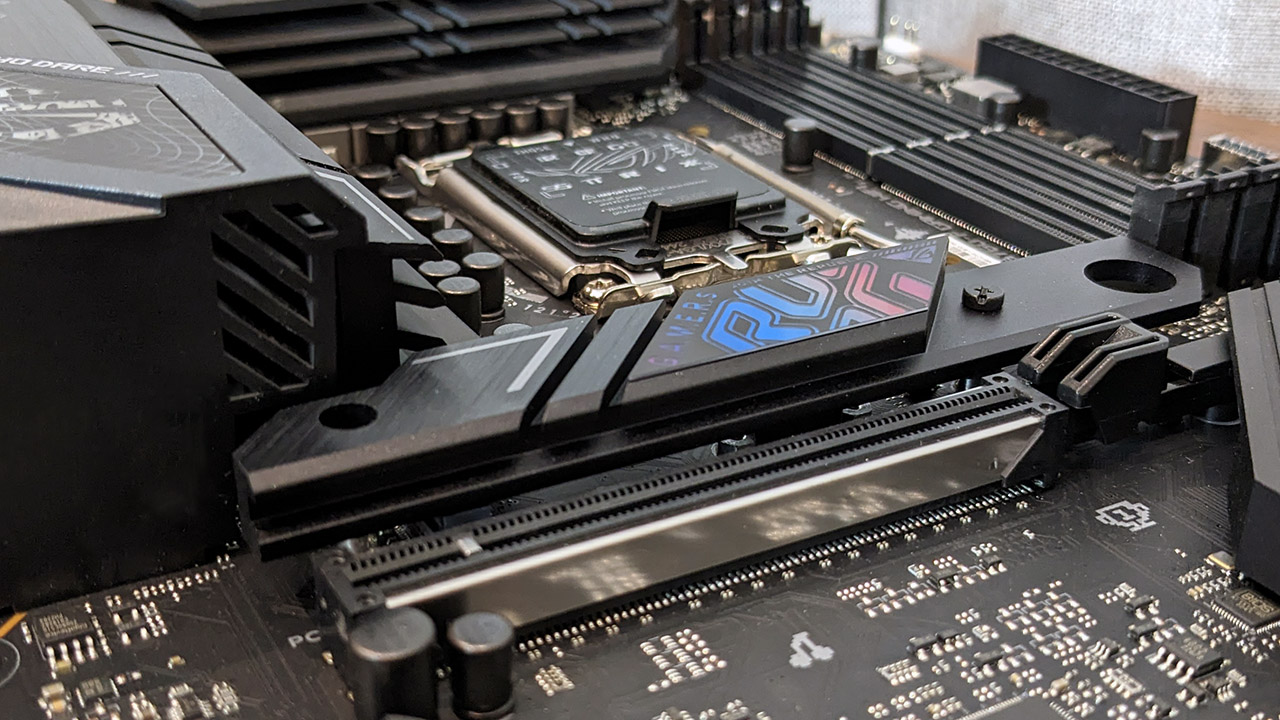
Socket: Intel LGA 1700
CPU compatibility: Intel 12th & 13th Gen desktop processors
Form factor: ATX
Memory support: DDR5-7800(OC), Up to 128GB
Storage: 3x M.2, 4x SATA
USB: Up to 1x USB 3.2 Gen2x2, 2x USB 3.2 Gen 2, 8x USB 3.1 Gen 1, 4x USB 2.0
Display: 1x HDMI 2.1, 1x DP 1.4
Networking: Intel 2.5G LAN, Wi-Fi 6E
Audio: Realtek ALC4080
Price: $269 / £279 / AU$499
Speaking of RGB, Asus includes a small RGB lit ROG logo atop the main VRM heatsink next to the rear I/O. The board includes four more RGB headers, three of which are addressable meaning you can control various fans, AIO coolers or RGB strips via Asus' solid Aura Sync software.
Another key feature is support for DDR5-7800. That's elite tier right there. It takes some real PCB engineering to qualify for those speeds. You also get a USB 3.2 Gen 2 Type-C header (but no Gen 2x2), seven fan headers and a Thunderbolt (USB4) header.
The board's storage complement isn't bad, with three M.2 slots and four SATA ports. All M.2 slots support PCIe 4.0 x4 and are cooled by capable heatsinks. Other than overclocking, storage is perhaps the key differentiating factor between Z790 and B760. There are Z790 boards around the same price that include four M.2 slots including a primary PCIe 5.0 slot and up to eight SATA ports. Again, for the majority of users this won't matter, but for file hoarders, Z790 does offer better storage support.
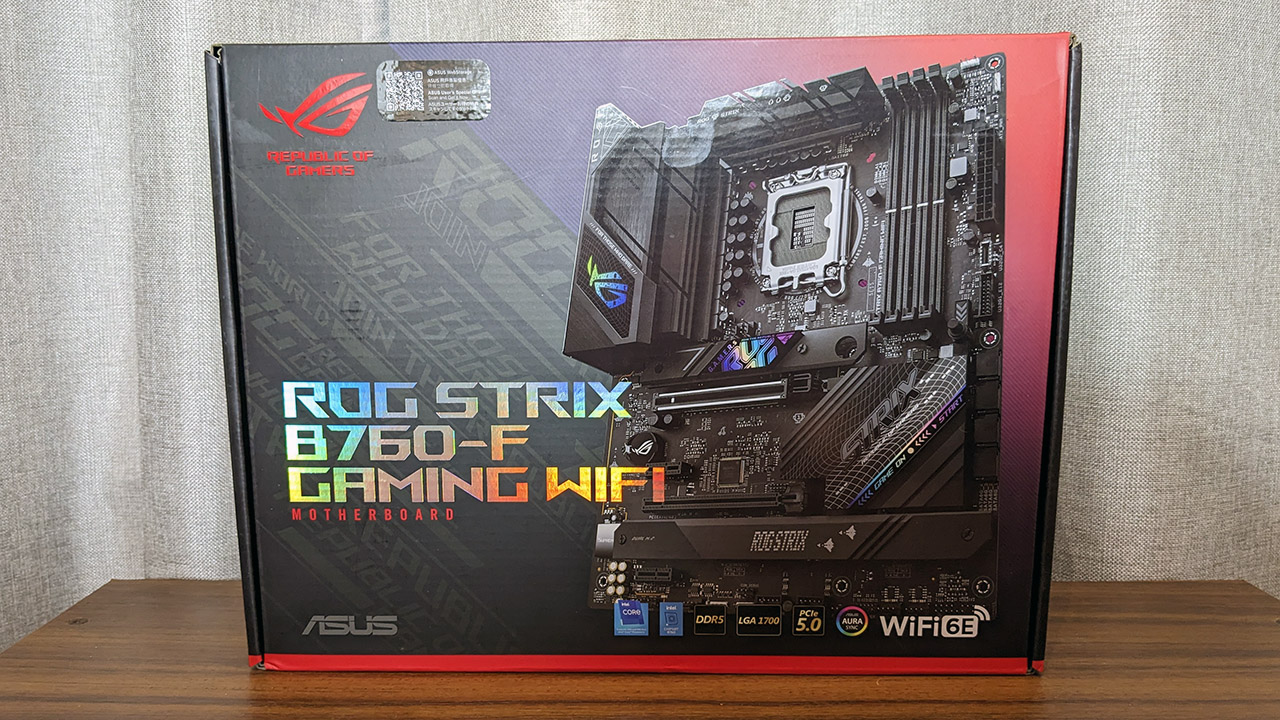

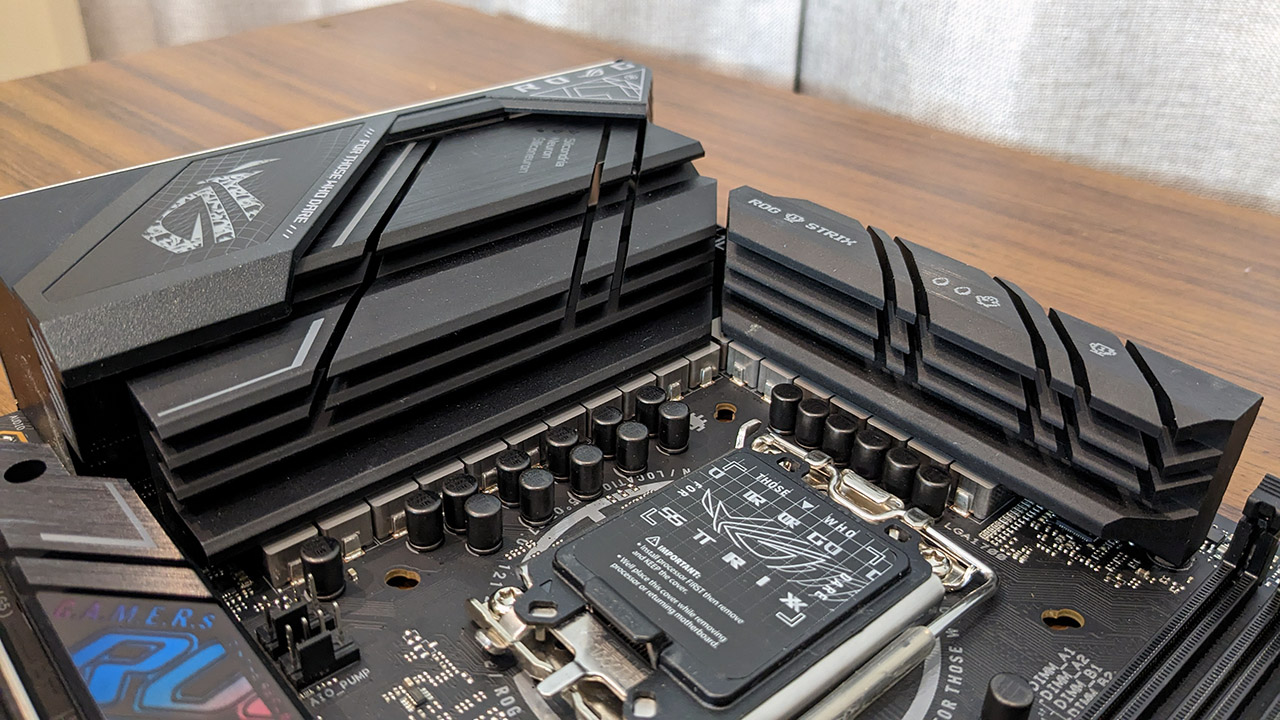
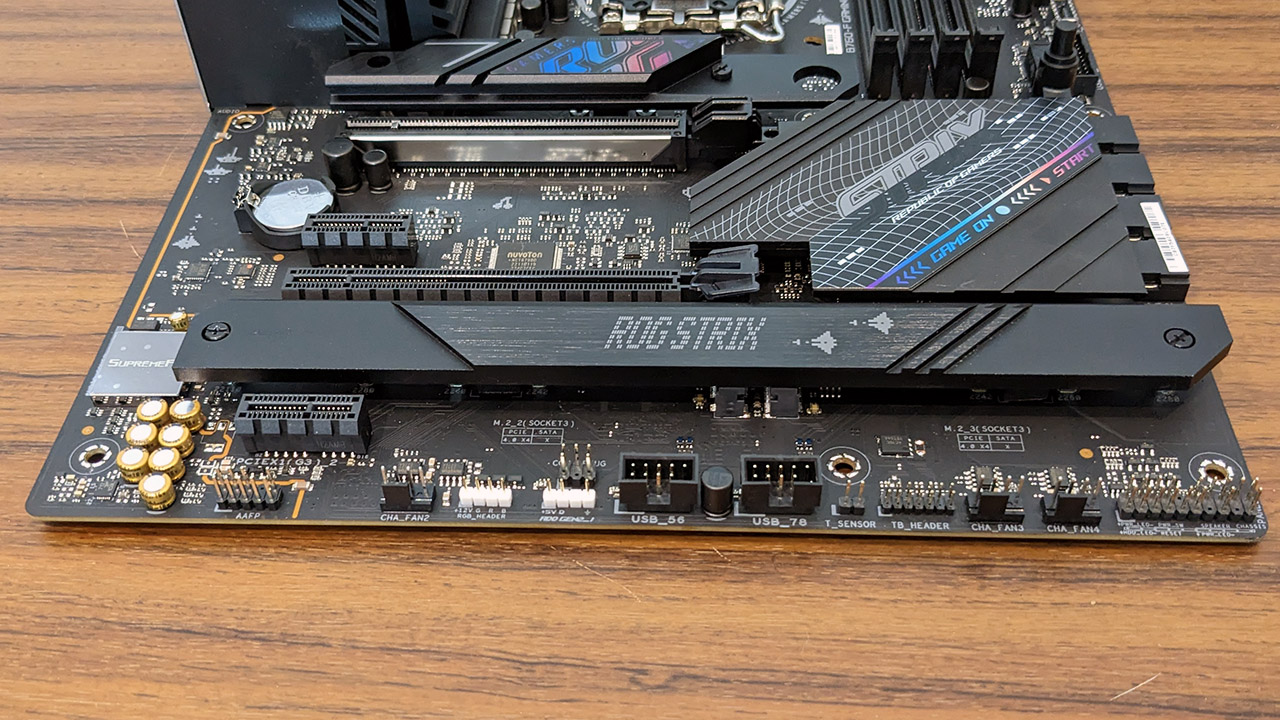
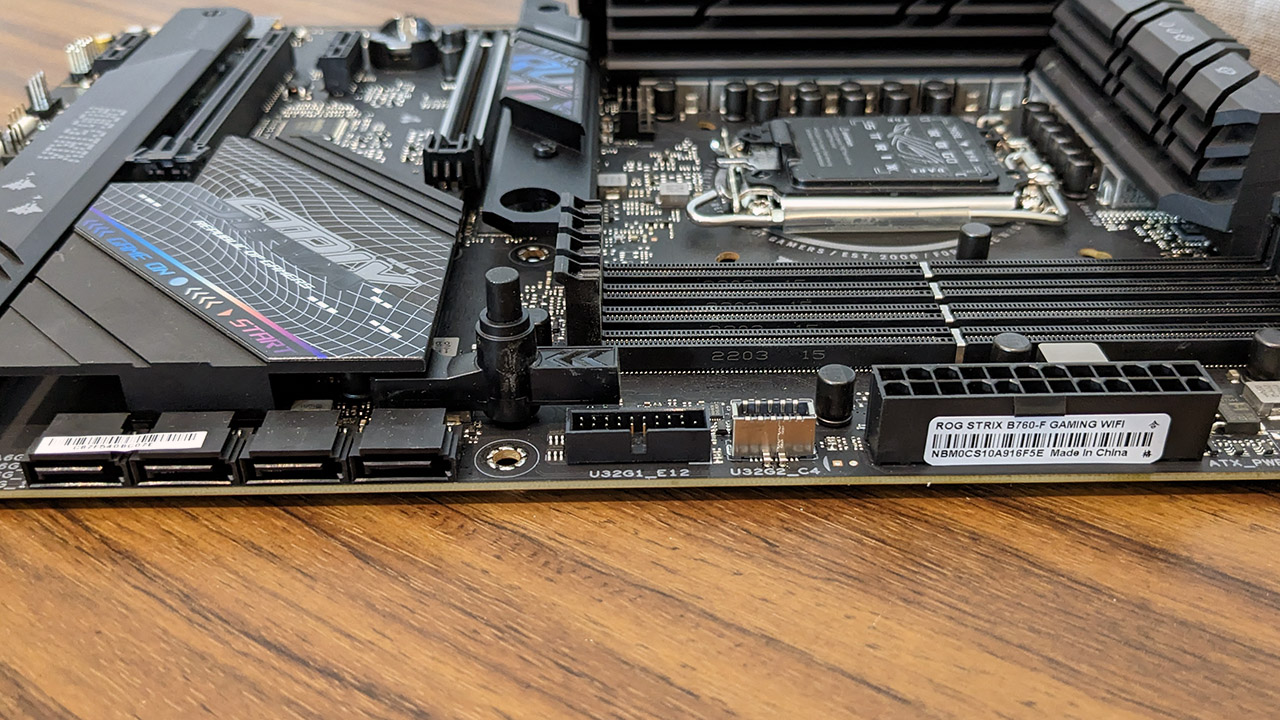
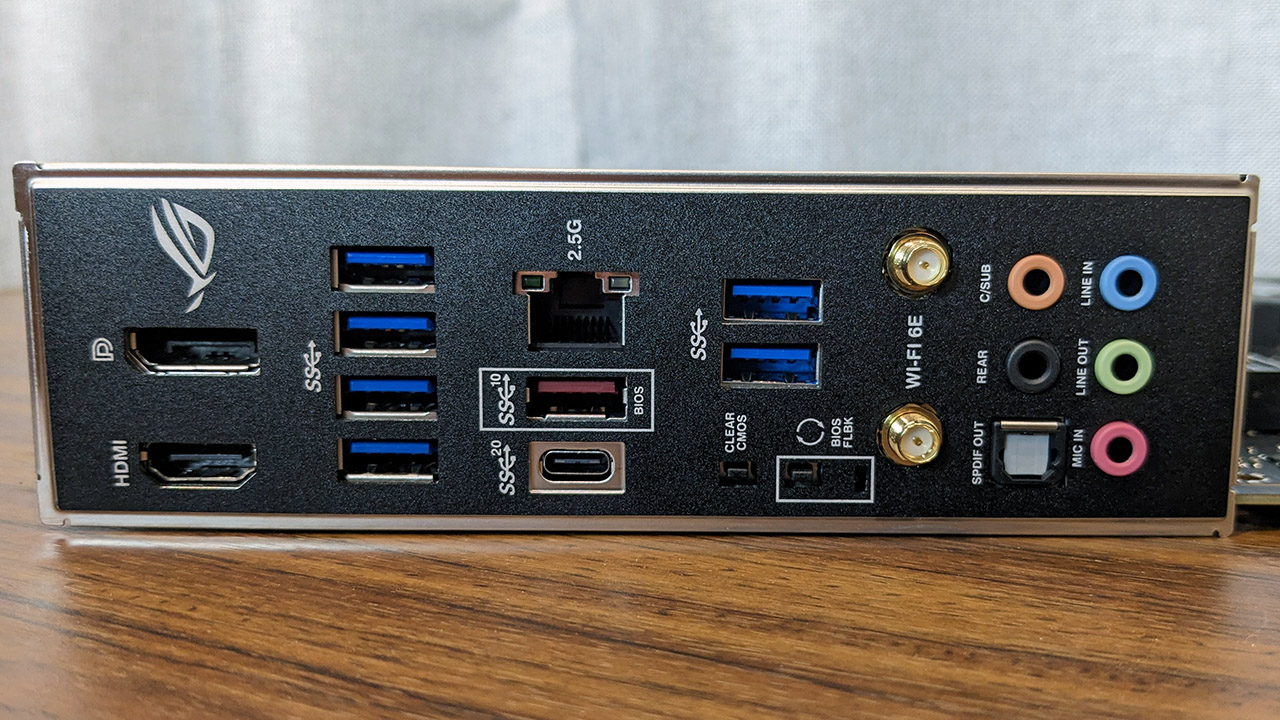
The VRM of the Asus ROG Strix B760-F is very good. Asus chose a well-balanced 16+1 phase VRM with 60A stages. Though we're mostly past the days of abysmal 4-phase heatsink-less designs, many of the cheaper B760 or Z790 boards still come with basic VRM implementations. They'll be fine with one of the many 65W i3 or i5 processors, but will struggle to handle a heavily loaded 13900K.
The Asus will have no such trouble. Feel free to run your 13900K under heavy loads, knowing the VRM and chunky heatsinks of the ROG Strix B760F will take the punishment.
The rear I/O is certainly one of the better B760 ones you'll come across. A USB 3.2 Gen 2x2 port is definitely welcome. An additional Gen 2 port and six Gen 1 ports should take care of most gamers' USB requirements. You get HDMI 2.1 and DP 1.4a ports, CMOS clear and BIOS flashback buttons along with a full set of audio ports with S/PDIF.

For audio duties, Asus selected the ALC4080 codec. It's a good step up from the ageing ALC897 you will find on cheaper boards. It's got a Savitech headphone amplifier with a 110dBA signal to noise ratio. Not bad at all.
2.5G networking is pretty much ubiquitous now, but WiFi 6E is one of those features that isn't yet a top to bottom feature, with some boards omitting WiFi all together. The good quality audio, networking and I/O in general help to justify the relatively steep cost of the ROG Strix B760-F.
Asus ROG Strix B760-F Gaming WiFi performance
System Performance
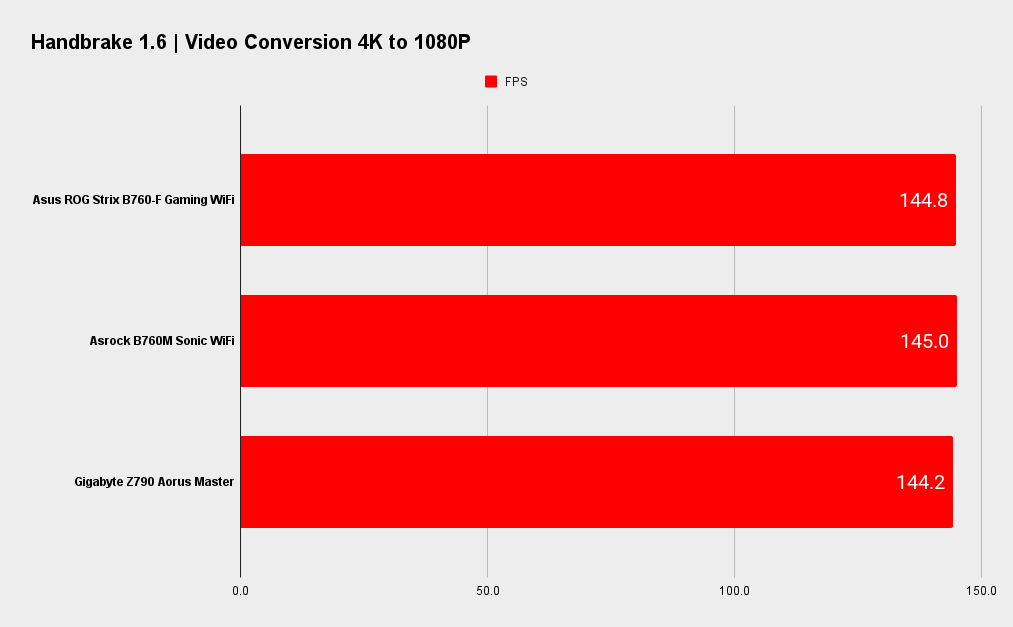
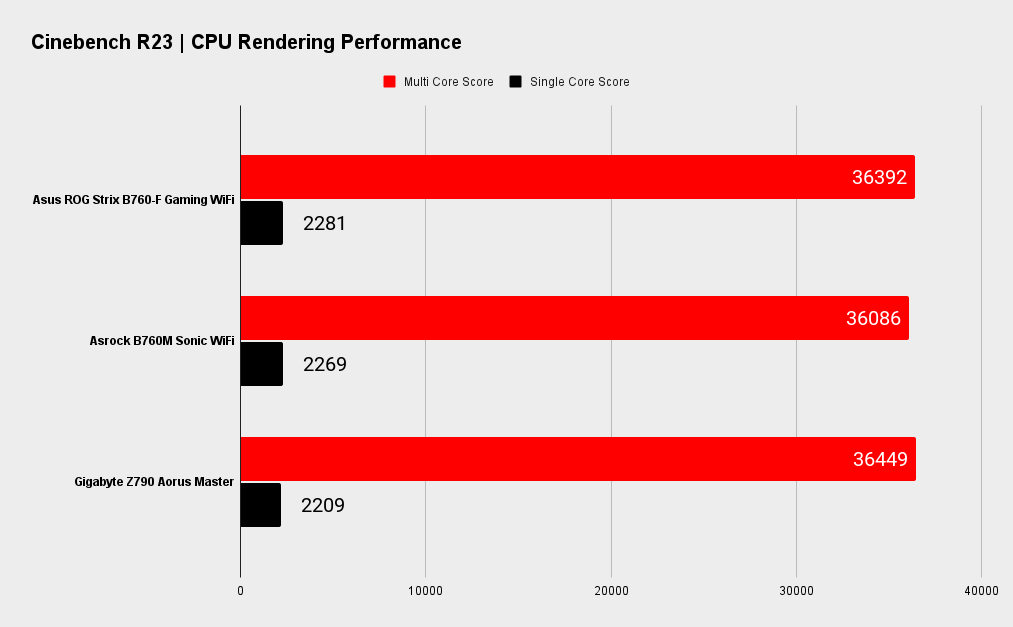
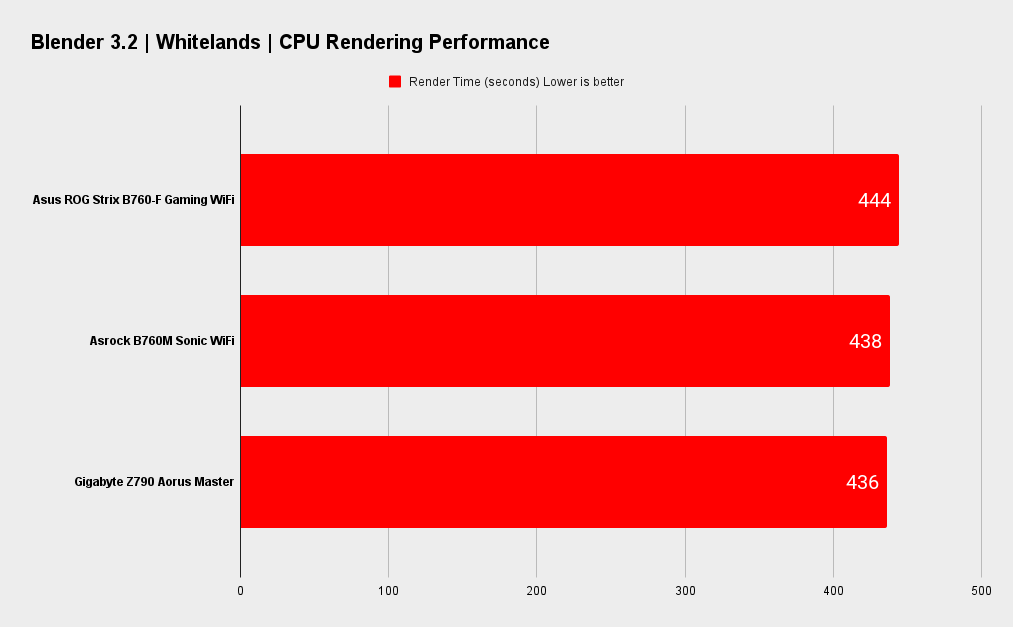
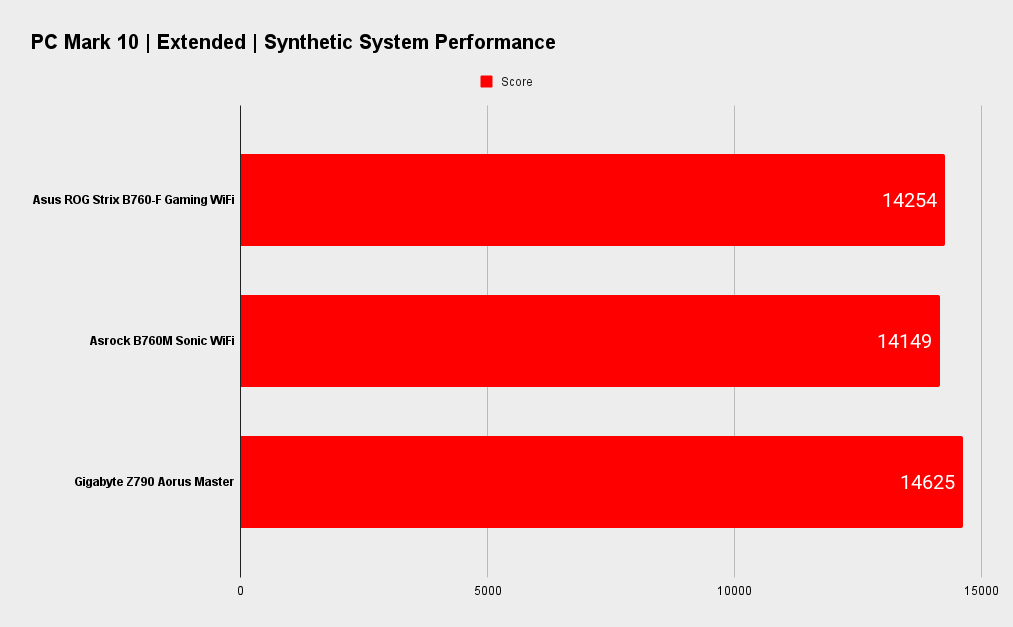
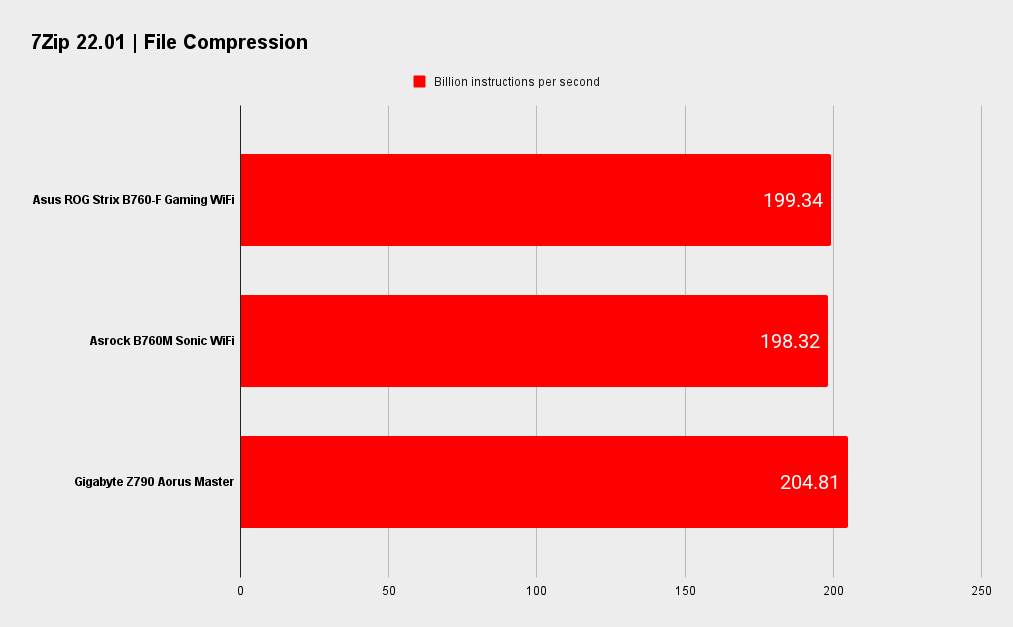
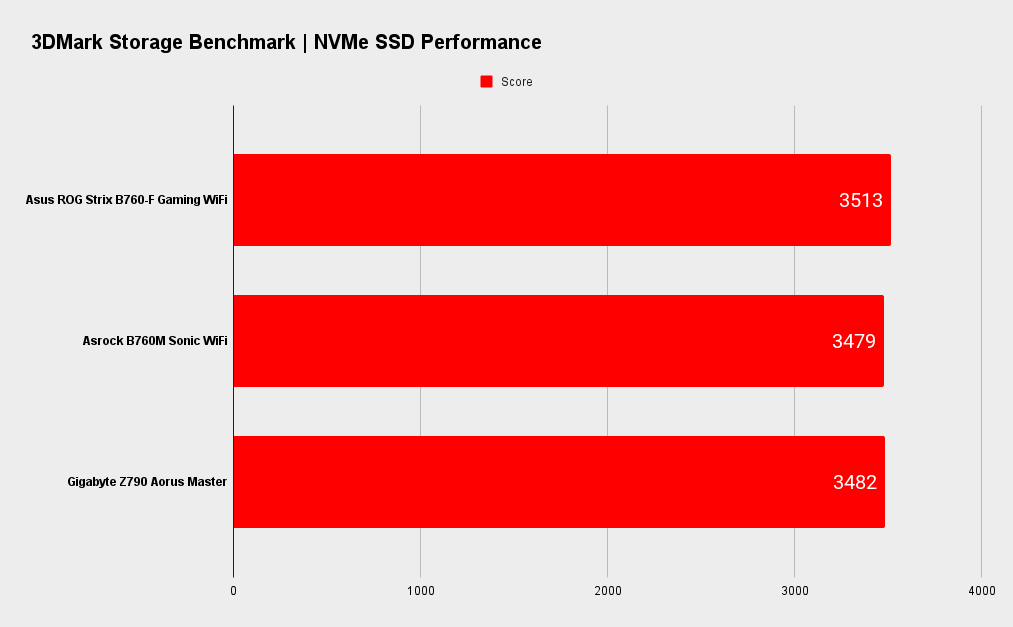
Gaming Performance
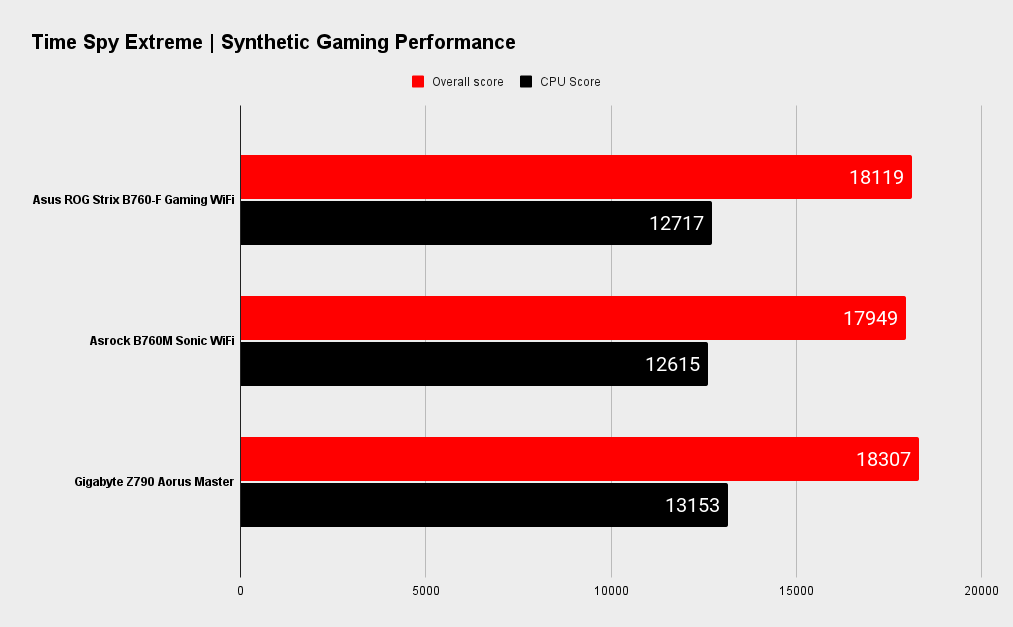
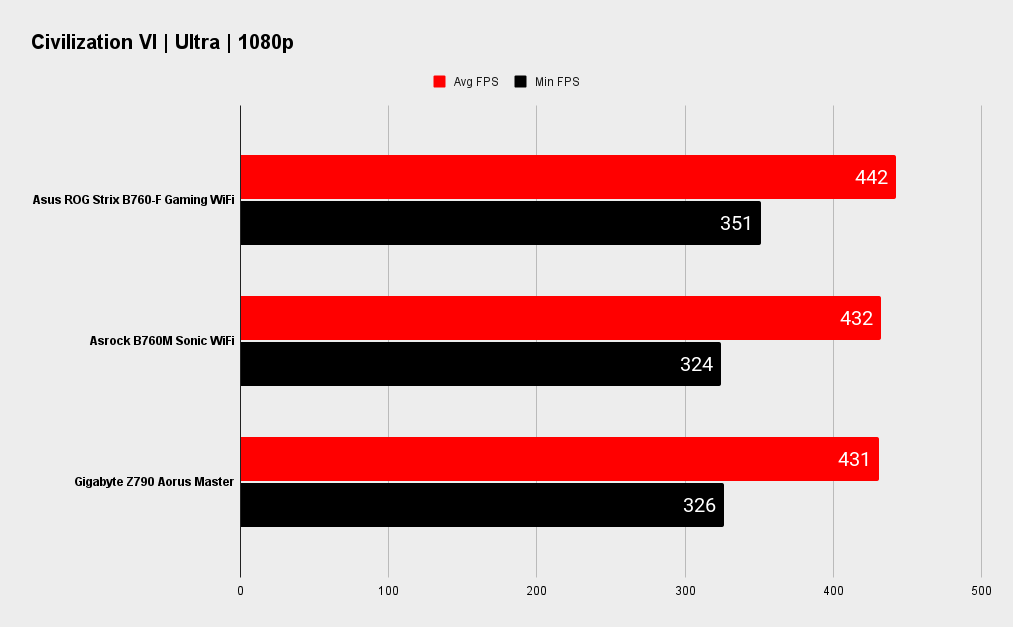
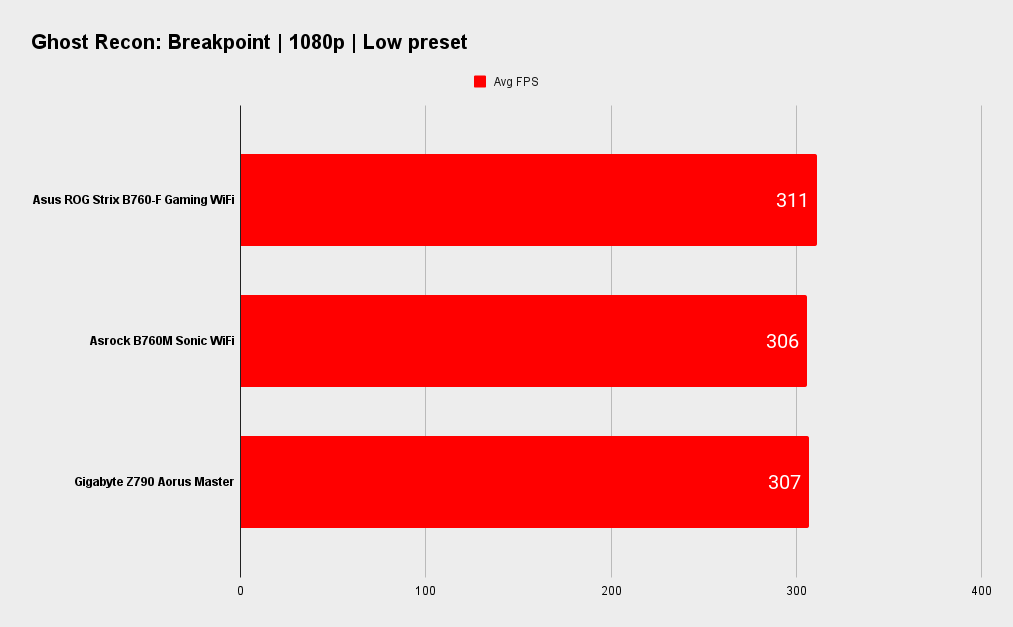
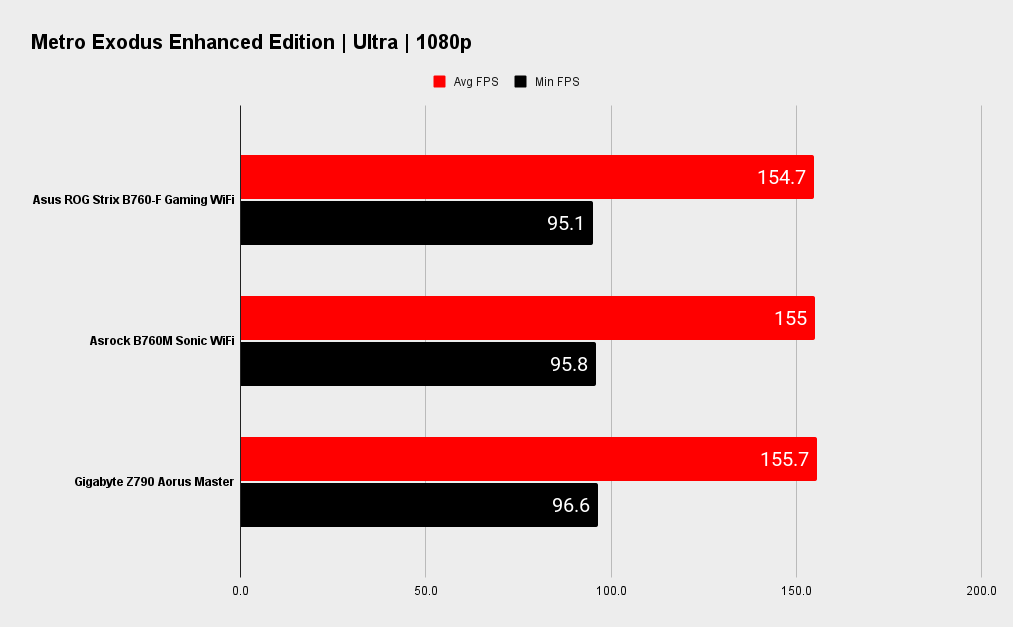
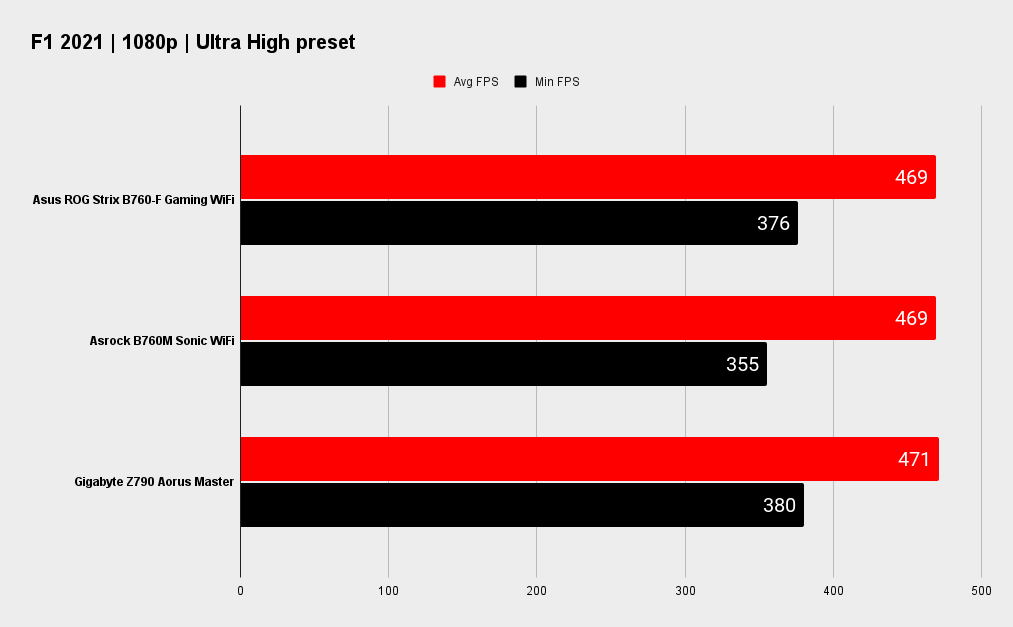
Asus ROG Strix B760-F Gaming WiFi analysis
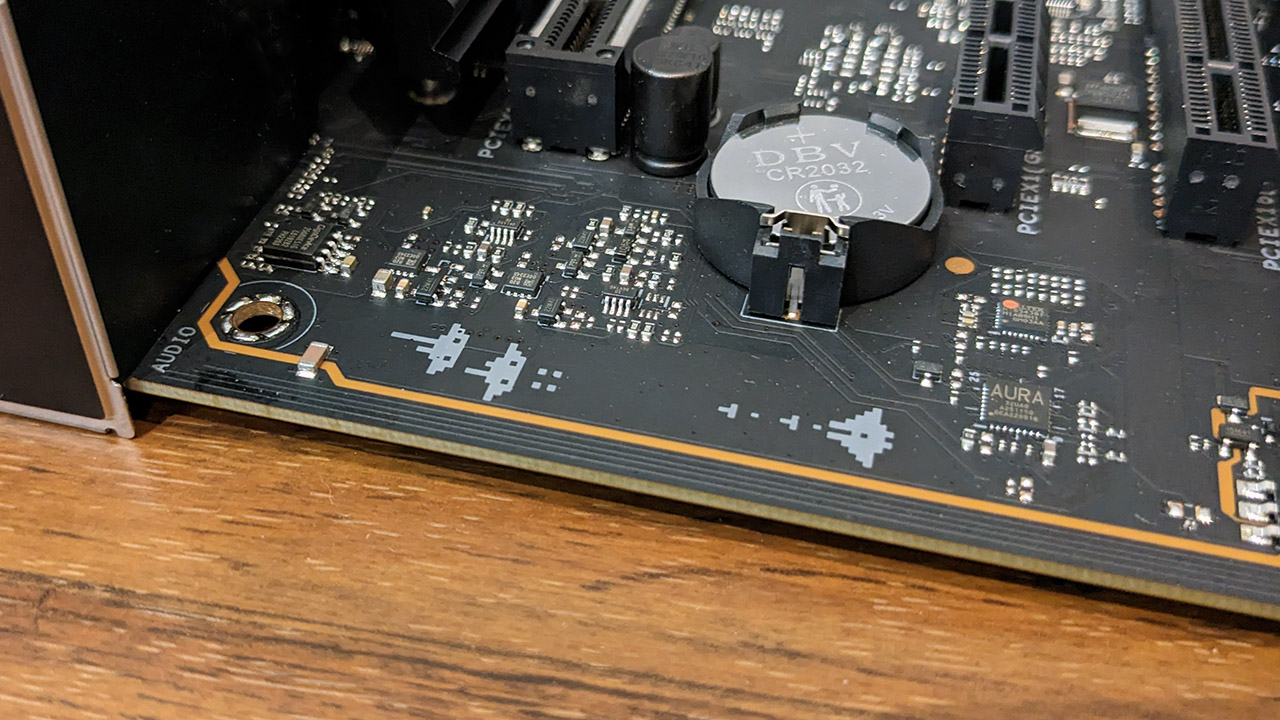
The results don’t throw up any real surprises, as usual. But the Gigabyte Z790 Aorus Master did have an edge in some of the system tests. The Asus was strong in the storage test.
When it comes to gaming, the Asus generally performed well. Civilization VI isn’t a game that needs hundreds of FPS, but it is a good test for both CPU and GPU scaling. The mighty RTX 4090 and a 13900K on a B series board? Not. A. Problem.
CPU: Intel Core i9 13900K
Graphics: Nvidia GeForce RTX 4090 Founders Edition
RAM: 2x 16GB G.Skill Trident Z5 DDR5-6000 C30
Storage: 2TB Seagate FireCuda 530
Cooling: Cooler Master PL360 Flux 360mm AIO
PSU: Corsair AX1000
B760 doesn’t allow CPU overclocking, but you are free to play with power limits. As long as you've got top spec cooling to handle the heat output, the board can deliver.
I did a very quick test with a set of G.Skill DDR5-7200 and was pleased to see it boot up and load windows without issue. The Asus memory QVL list shows many kits at DDR5-7000+ are supported. Excellent! I am thrilled Intel finally saw the light and allowed unlocked memory to be used from B560 onwards. It's really elevated B series chipsets to a new level now we don’t have to deal with that silly restriction.
The BIOS of the Asus will be familiar to any user that's poked around in a ROG BIOS over the last several years. Again, you cannot manually overclock, but there are lots of things to play with, even if it's not at the level of a Maximus board. Not that I'd expect it to be. Tweakers will still be better served by the fully enabled features of Z790.
Asus ROG Strix B760-F Gaming WiFi verdict
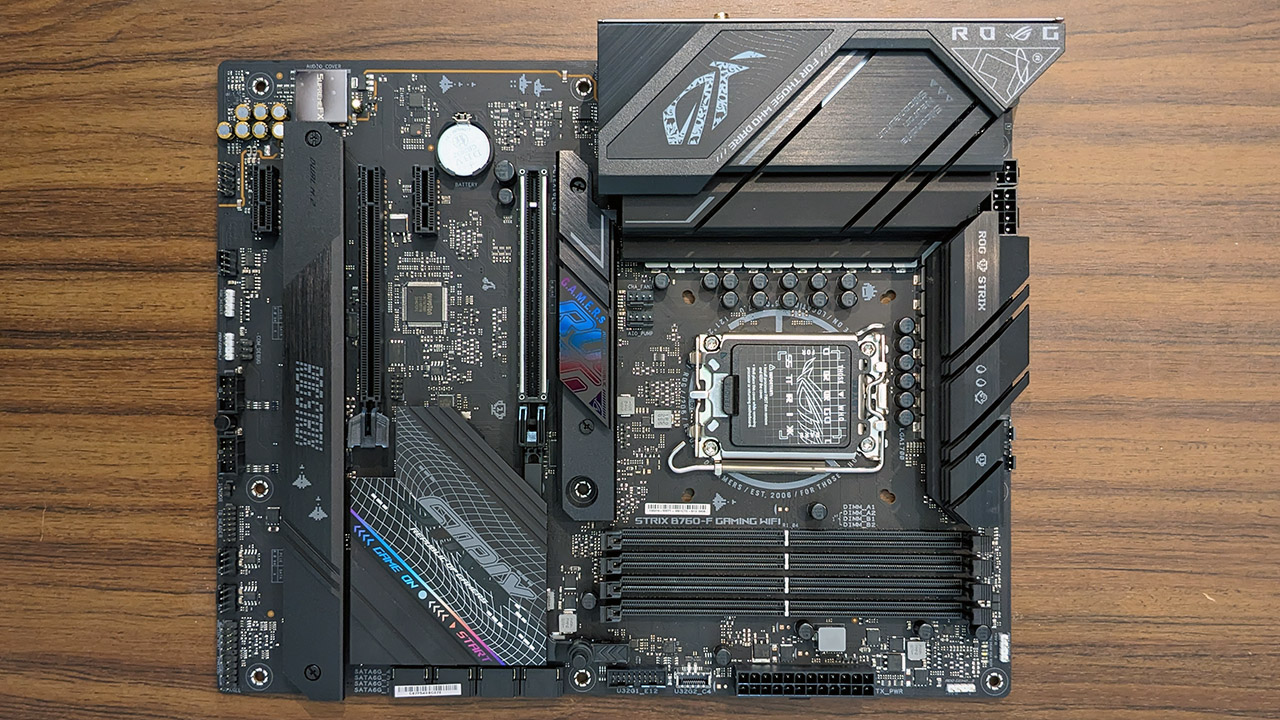
It's a recurring dilemma. Do you buy a high-end B series board or a low-mid range Z series one? It applies to AMD's lower high-end board and their higher low-end chipsets, too. It all depends on what you want to do with your rig.
The Asus ROG Strix B760-F Gaming WiFi is able to hold its head high alongside many Z790 boards, that's as long as you don't want to manually overclock. But with the advanced turbo modes of modern chips - not to mention the level of cooling required, overclocking isn't what it once was.
The Asus is able to run the fastest memory kits which is fantastic even if they are overkill for most users. You won't get the PCIe 5.0 SSD support, but does it matter right now? A PCIe 4.0 SSD isn't going to become obsolete overnight. Heck, a good PCIe 3.0 SSD is still more than able to hold its own in a modern 2023 gaming rig.
It's able to hold its head high alongside many Z790 boards, that's as long as you don't want to manually overclock.
So, unless you need a bazillion USB ports or something like 10G LAN, the Strix B760 is a board that delivers just about everything you would expect from a ROG board. The BIOS is feature rich, you can run a 13900K up maximum power limits, with up to 128GB of DDR5 and an RX 7900XTX or RTX 4090. Do that and you'll get all of the performance of a board at more than twice the price.
OK, the Asus - from what I can gather, is the most expensive B760 board of all but its still pretty attractive overall when compared to the price of many enthusiast tier boards. Ask yourself if buying a high end Z790 board is worth it at this point in time? 14th Gen CPUs won't be supported so there's no upgrade path available. But there's an alternative view on that. You might have a 12th Gen CPU or buy something like an Core i5 13400F now. What if in a year or two you choose to upgrade to a 13700K or 13900K? You'll want a board with a capable VRM to power it, and that's an area the cheaper boards can fall behind.
If you don't want to cough up the big bucks for a Maximus board, saving and going for the Strix B760-F is a perfectly variable alternative, and one that will allow you to divert a few hundred towards a better CPU or GPU or a bigger SSD. This B series board isn't cheap and boring. Far from it.
The Asus ROG Strix B760-F Gaming may be the most expensive B760 board of all, but it's a good option if you're a fan of ROG. As long as you don't care about PCIe 5.0 SSDs and never intend to overclock your CPU, it'll deliver most of what you'll get from a much more expensive Maximus Z790 board.

Chris' gaming experiences go back to the mid-nineties when he conned his parents into buying an 'educational PC' that was conveniently overpowered to play Doom and Tie Fighter. He developed a love of extreme overclocking that destroyed his savings despite the cheaper hardware on offer via his job at a PC store. To afford more LN2 he began moonlighting as a reviewer for VR-Zone before jumping the fence to work for MSI Australia. Since then, he's gone back to journalism, enthusiastically reviewing the latest and greatest components for PC & Tech Authority, PC Powerplay and currently Australian Personal Computer magazine and PC Gamer. Chris still puts far too many hours into Borderlands 3, always striving to become a more efficient killer.


